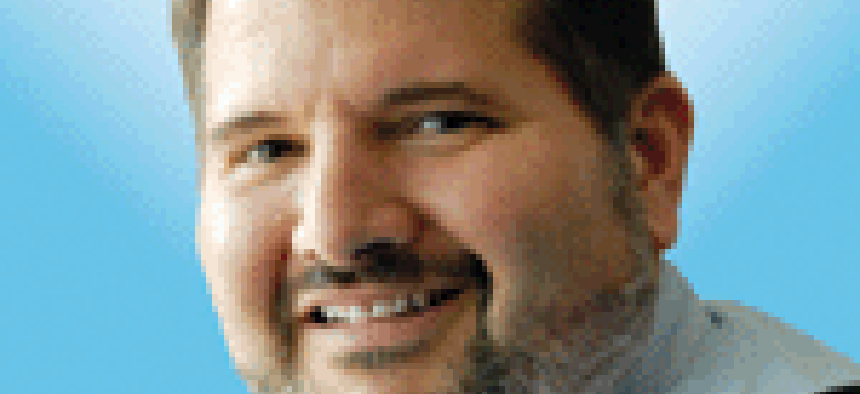What drives Lockheed's global growth strategy

Lockheed Martin CEO Marillyn Hewson explains how her company's strategy addresses four megatrends that are reshaping the world. It's an example more CEOs should follow.
Addressing reporters from a range of media – mainstream news to niche defense and technology publications – Lockheed Martin Chairman and CEO Marillyn Hewson put her company’s strategy at the nexus of what she called four megatrends.
These are trends that are impacting Lockheed and other defense companies but also entities in the civilian, commercial and international markets.
“These megatrends will affect how the world works in the decades ahead,” she said.
Hewson’s four megatrends are:
- The evolving global power dynamic
- The rise of digital technology and the risks of an increasingly connected world
- Increasing global population
- Worldwide economic uncertainty
“Collectively these trends are transformative, creating the most complex global security environment we’ve ever seen,” she said.
Her description was interesting in that she used the megatrends to both comment on the state of the world, but also on how they shape Lockheed’s place in it.
All four of these megatrends have national security implications for the U.S. and its allies – allies, who are potential Lockheed Martin customers.
“Today there are more actors with more power in more places than ever before,” she said as she introduced the first megatrend of the evolving global power dynamic. She was speaking Wednesday at the company’s media day.
The U.S. cannot afford to take its dominance for granted, she said. In a dramatic passage, she described her world view:
This is a world where developing nations, rogue nations, non-state groups, and even individuals, are more and more able to influence global events. Where vast sums of money can cross the world in a keystroke… Where a drought in Australia can lead to food crises from Haiti to Hong Kong…And where a virus in Africa can unleash panic in North America… And where a lone terrorist can board an airplane anywhere, and change the course of history everywhere. In such a world, strength, flexibility, and adaptability are at a premium. We must be innovative and agile to keep up with these evolving challenges and emerging threats.
She spent a significant amount of time talking about the F-35, the fifth-generation fighter that Lockheed is building for the U.S. Air Force and Marines Corps as well as other governments around the world. She deflected criticism that the plane was suffering from undue cost overruns. The plan is on track, she said, and the vast majority – 80 percent – of the savings would be realized when the plane is in full production.
The F-35 and various missile defense systems are at the center of Lockheed’s international strategy. She reported that in 2014, the company hit their goal of pulling 20 percent of overall revenues from international markets. The new goal is 25 percent, which they should reach in a “few years,” Hewson said.
Closer to home for the IT community were her comments about digital technology and the opportunities and huge challenges it represents.
Lockheed faced 50 advanced persistent threat attacks in 2014 alone. “That number is sure to keep growing, so we’ve made significant investments to protect ourselves, our information, our warfighters and our shareholders,” she said.
They also are taking what they’ve learned from their own attacks and are applying that to their customers, particularly for critical infrastructure protection for energy, oil and gas, chemical, financial services and pharmaceutical industries.
The growing world population ties into climate change and the work Lockheed Martin is doing with weather satellites such as the GOES-R system for NOAA. The company also is upping its investment in nearly all aspects of energy – management, production, distribution and security.
Energy isn’t a large business for Lockheed, but it is growing, and the company is investing, Hewson said. Last year, they bought Sun Catalytix, which has promising energy storage technology that is important to the renewable energy industry.
The company also sees opportunities in genomics and food production and supply, where its satellite technology is helping farmers become more efficient and productive.
“We are delivering innovations that will help address population growth and reshape the future,” Hewson said.
The company is very supportive of more open international trade, which will help address the fourth megatrend of an uncertain global economy, she said.
For its part, Lockheed has been focused on cost and affordability – its customers have been demanding it.
The company has found $1.17 billion in supply chain and affordability savings. It’s also reduced its corporate footprint by 7.5 billion square feet since 2008.
The focus has been not just on taking cost out of operations but also on affordability. For example, the company reduced the number of parts needed in the A2100 global communications satellite, which allowed it to be built more quickly and at a lower cost.
“We’re well on our way to achieving 35 percent lower costs and 25 percent faster delivery,” she said.
Obviously, Hewson’s speech was a rah-rah moment for Lockheed Martin. She was able to crow about several of the company’s achievements of the past year, but framing her comments around those four megatrends was instructive to me.
On one hand, it elevates the importance of the work Lockheed Martin does, but it also provides a broader context that frankly, I think, all government contractors need to think about. Hewson clearly has a vision of the problems in the world, and what her company is doing to address them.
Of course, that’s where the market is, so that’s where your business needs to be, but whether you are a large business or a small one, you need to answer these questions: What’s my purpose? Why do I do this work? What problem am I solving?
If you can do that, your strategy should follow along nicely.


